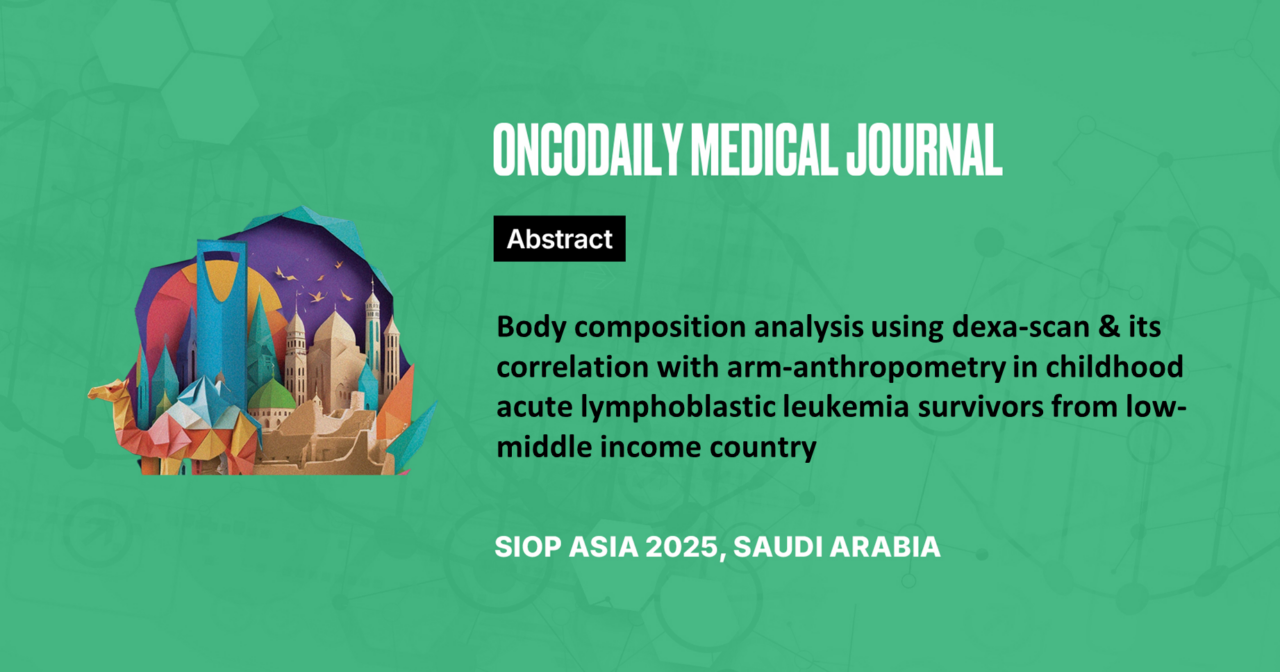Body composition analysis using dexa-scan and its correlation with arm-anthropometry in childhood acute lymphoblastic leukemia survivors from low-middle income country
Abstract
Introduction: Deranged body-composition (BC) as a late-effect in childhood acute lymphoblastic leukemia survivors (cALLS) is a concern with limited data from low-middle-income countries (LMIC). We studied the prevalence of high-adiposity, sarcopenia, sarcopenic obesity (SO) in cALLS and factors affecting them.
Methodology: This cross-sectional study enrolled cALLS>7 years of age. BC was measured using DEXA-scan and arm-anthropometry. Prevalence of high-adiposity, sarcopenia and sarcopenic obesity (SO) and demographic, therapy-related and endocrine factors affecting them were noted.
Results: Fifty-nine cALLS with median age 66 months (range:6-212) at diagnosis and median duration 14 months (range:1-113) post completion of therapy for ALL were analyzed. Total of 36/59 (61%) had deranged BC: High adiposity-28/59(47%), sarcopenia-20/59(34%), SO-9/59(15%). Metabolic syndrome (MS) was seen in 7/59(12%). cALLS with lower mean-age at diagnosis and at enrolment had high-adiposity levels and sarcopenia. Sarcopenia was seen more commonly in females, pre-pubertal children and cALLS with lower mean-interval from therapy completion. Obesity, sarcopenia & SO were not significantly associated with age, sex, type of ALL, puberty status, steroid dose and cranial-irradiation.
High leptin levels were seen in cALLS with obesity & SO. Vit D levels were lower in cALLS with high adiposity and sarcopenia. Health-related quality of life (HRQoL) score was lower in cALLS with high adiposity indicating poorer quality of life. Surrogate measures of BC including mid-upper-arm circumference (MUAC) and triceps-skin-fold thickness (TSFT) correlated well with DEXA-generated markers.
Conclusion: Prevalence of the deranged BC & resultant MS in cALLS in LMIC is high. Deranged BC is associated with early onset, indicating need for early screening, frequent monitoring of BC & MS so as to offer timely intervention. Serum leptin levels are a valuable biochemical indicator of high-adiposity and SO in cALLS. MUAC and TSFT offers reliable surrogate measures for BCA compared to DEXA-scan in LMIC.





